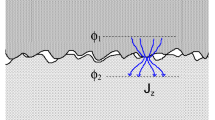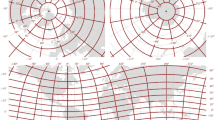Abstract
IN a volume conductor with an insulating boundary the integral of potential over the surface can be utilized to deduce the equivalent, internal generator. This communication deals with networks of resistors, collecting potentials over the surface of the body; it is an attempt to attain clinical information on the cardiac, equivalent generator. The input of the networks is fed by electrodes distributed on the wall of the chest, the output of the networks is feeding the measuring instrument. The time-varying potentials are distributed and superimposed in the network and recorded as vectorial electrocardiograms. The framework of resistors yields the reference system of the electrocardiographic leads between the output terminals and determines the lead vector relations. Thus, the vector representing the equivalent generator of the cardioelectric field is resolved into co-ordinates.
Similar content being viewed by others
References
Rijlant, P., Bull. Acad. Roy. Méd., Sixth Series, 22, 464 (1957).
Kowarzykowie, H., and Z., Spatial Vectorcardiography (Pergamon Press, 1961).
Author information
Authors and Affiliations
Rights and permissions
About this article
Cite this article
KOWARZYK, H., KOWARZYK, Z. & JAGIELSKI, J. Spatial Substitutes of the Lead Vector Triangle. Nature 206, 1365–1367 (1965). https://doi.org/10.1038/2061365a0
Issue Date:
DOI: https://doi.org/10.1038/2061365a0
- Springer Nature Limited





